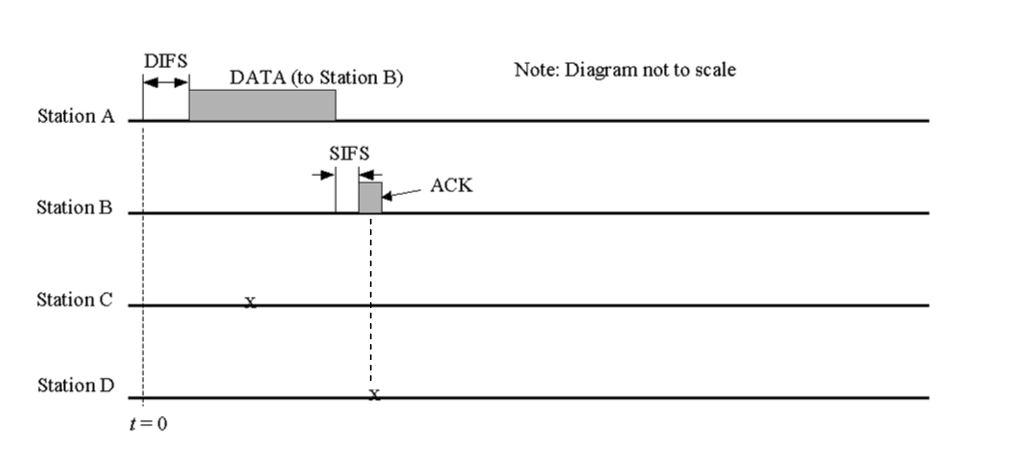Question
The figure below illustrates an example timing diagram for the Distributed Coordination Function (Basic Access mode) in IEEE 802.11 wireless LANs. It shows the procedure
The figure below illustrates an example timing diagram for the Distributed Coordination Function (Basic Access mode) in IEEE 802.11 wireless LANs. It shows the procedure for Station A sending a DATA frame (with payload = 500 bytes) to Station B, which is subsequently acknowledged. Make the following assumptions:
All Stations can hear each others transmissions
Backoff interval = Slottime x Random(0,31)
Next random number (from Random(0,31) function) of station C = 7
Next random number (from Random(0,31) function) of station D = 11
Station C has a DATA frame ready to transmit to B at the point marked x
Station D has a DATA frame ready to transmit to A at the point marked x
Complete the timing diagram for the transmissions of Stations C and D. That is, draw a diagram as in figure below, and show where necessary the DIFS, SIFS, ACK, DATA, Backoff and Deference for ALL stations. Your diagram does not have to be to scale, but the ordering of events must be clear (e.g. in the current diagram it is clear that the SIFS at station B starts at the same time the DATA from station A is completed).

Step by Step Solution
There are 3 Steps involved in it
Step: 1

Get Instant Access to Expert-Tailored Solutions
See step-by-step solutions with expert insights and AI powered tools for academic success
Step: 2

Step: 3

Ace Your Homework with AI
Get the answers you need in no time with our AI-driven, step-by-step assistance
Get Started


